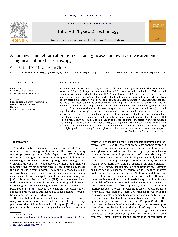摘要
In order to improve prediction accuracy of calibration in human blood glucose noninvasive measurement using near infrared (NIR) spectroscopy, a modified uninformative variable elimination (mUVE) method combined with kernel partial least squares (KPLS), named as mUVE-KPLS, is proposed as an alternative nonlinear modeling strategy. Under the mUVE method, high-frequency noise and matrix background can be eliminated simultaneously, which provide a optimized data for calibration in sequence; under the kernel trick, a nonlinear relationship of response variable and predictor variables is constructed, which is different with PLS that is a complex model and inappropriate to describe the underlying data structure with significant nonlinear characteristics. Two NIR spectra data of basic research experiments (simulated physiological solution samples experiment in vitro and human noninvasive measurement experiment in vivo) are introduced to evaluate the performance of the proposed method. The results indicate that, after elimination high-frequency noise and matrix background from optical absorption of water in NIR region, a high-quality spectra data is employed in calibration; and under the selection of kernel function and kernel parameter, the best prediction accuracy can be got by KPLS with Gaussian kernel compared with Spline-PLS and PLS. It is encouraging that mUVE-KPLS is a promising nonlinear calibration strategy with higher prediction accuracy for blood glucose noninvasive measurement using NIR spectroscopy.
- 出版日期2010-9
- 单位北京航空航天大学
